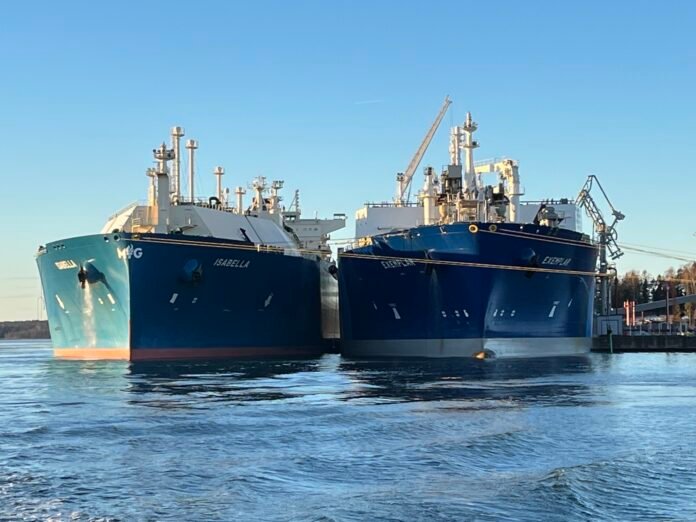
On December 28, the floating FSRU Exemplar liquefied gas terminal arrived at Inga (Finland) port, and it was immediately connected to Finland’s gas transmission network.
The country has already built up the necessary infrastructure just seven months after Gazprom halted gas deliveries to Finland. It can supply gas from dozens of suppliers without depending on a monopoly that can raise prices or return the tap when it comes to its mind.
On New Year’s Eve, the first tanker with liquefied gas arrived and accordingly, the first gas deliveries to Finland began. But the terminal has a capacity of 5 billion cubic meters of gas per year, which is twice the country’s needs. So the terminal will also be used by Estonia and other countries in the region.
The Inga Terminal is the third new terminal in Europe, after Emshafen (Netherlands) and Wilhelmshaven (Germany). When the number of new terminals reaches ten, the worries about gas shortages will disappear, which will positively affect prices.
New long-term contracts with gas suppliers are gradually being concluded, which allows for low prices. For example, German RWE recently signed a 15-year contract to supply gas from the American Sempra, and the Portuguese company Galp signed a 20-year contract with the American next Decade. Other gas producers will soon intervene in the European market, increasing competition.
In December 2022, ADNOC (Abu Dhabi) acquired a 24.9% stake in Austrian OMV. One of the goals of the cooperation is also the provision of liquefied gas for Austria (the two companies have signed a gas supply agreement for next winter). Also in December, OMV and partners announced an investment of $921 million into the development of a new gas production project in Norway (Berling).
Several European companies have invested in Qatar’s world’s largest new liquefied gas project – including Shell, Total, and Eny. The $50 billion project will dramatically increase the global gas supply in the next 3-4 years.